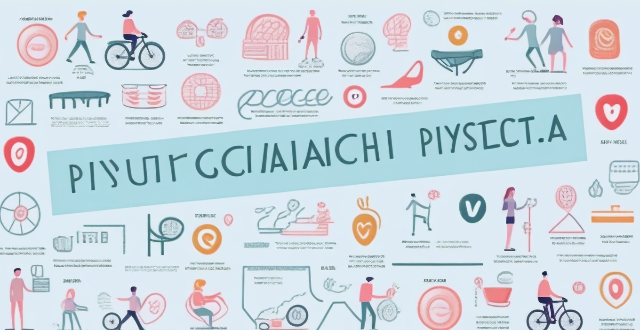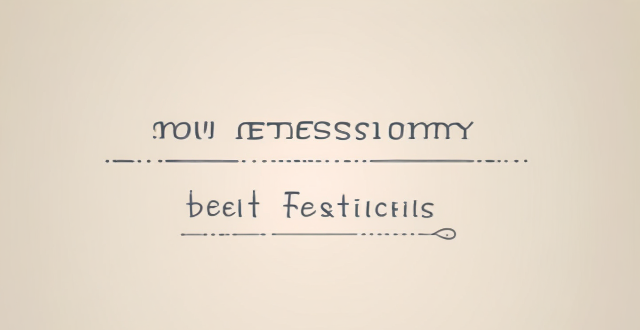Sports Treatment

What is the cost of treatment at a sports rehabilitation center ?
The cost of treatment at a sports rehabilitation center can vary depending on several factors, such as the location, services offered, and the severity of the injury. Here's a breakdown of the potential costs you may encounter: 1. Initial Assessment Fee: This fee covers the initial evaluation by a physical therapist or sports medicine specialist. It typically ranges from $50 to $200, depending on the facility and region. 2. Physical Therapy Sessions: Each session usually lasts between 30 minutes to an hour. The cost per session can range from $75 to $200, again depending on the location and expertise of the therapist. Most insurance plans cover part of this cost, but you may have to pay a copay or coinsurance. 3. Specialized Treatments: Some centers offer specialized treatments like hydrotherapy, ultrasound therapy, or electrical stimulation. These treatments can add an additional $30 to $100 per session. 4. Equipment Rental or Purchase: If your recovery requires the use of special equipment (like crutches, knee braces, etc.), there will be an additional cost. Rental fees can vary widely, while purchasing outright might set you back anywhere from $50 to several hundred dollars. 5. Follow-up Appointments: As your recovery progresses, you might need follow-up appointments to assess your progress and adjust your treatment plan. These can cost anywhere from $50 to $150 each. 6. Total Cost: The total cost of treatment can vary significantly based on the above factors. On average, you might expect to spend anywhere from $1,000 to $5,000 for a moderate to severe injury, assuming regular sessions over several weeks or months. Remember, this is just an estimate; actual costs can be higher or lower depending on individual circumstances.

What are some common sports injuries and how are they treated with sports medicine ?
This article discusses common sports injuries and their treatment in sports medicine. It covers sprains, strains, fractures, dislocations, concussions, rest and ice, compression and elevation, physical therapy, surgery, and rehabilitation. The article emphasizes the importance of understanding these injuries and seeking appropriate care to prevent them and promote recovery.

What qualifications should a sports rehabilitation center have ?
A sports rehabilitation center should have certified professionals, state-of-the-art equipment, evidence-based treatment approaches, comprehensive services, collaborative partnerships, and a comfortable environment to provide optimal care for athletes.

How effective are the treatments at sports rehabilitation centers ?
Sports rehabilitation centers play a crucial role in helping athletes recover from injuries and return to their peak performance levels. The effectiveness of treatments at these centers depends on various factors, including the expertise of the staff, the facilities available, and the individual needs of each athlete. In this article, we will discuss the key aspects that contribute to the success of sports rehabilitation programs.

Are there any risks associated with the treatments offered at sports rehabilitation centers ?
Sports rehabilitation centers offer a range of treatments aimed at helping athletes recover from injuries and improve performance, but there are potential risks associated with these therapies. Incorrect diagnosis or misdiagnosis, overexertion or reinjury, adverse reactions to treatments, infection risks, and long-term effects of treatments are some of the common risks associated with sports rehabilitation treatments. Athletes should work closely with their therapists to ensure proper diagnosis and treatment planning while being aware of potential risks and seeking prompt medical attention if needed.

What are the treatment options for COVID-19 ?
The text is about the different treatment options for COVID-19. The treatments are divided into symptomatic treatment, antiviral treatment, monoclonal antibodies, convalescent plasma therapy, supportive care, and other potential therapies. Symptomatic treatment includes rest and hydration, pain relievers, and antibiotics if necessary. Antiviral medications such as Remdesivir and Favipiravir may be used in severe cases to suppress the virus. Monoclonal antibodies like Bamlanivimab and Casirivimab and Imdevimab can be used to treat certain patients at high risk of developing severe illness. Convalescent plasma therapy involves collecting blood plasma from recovered patients and transfusing it into active patients. Supportive care includes oxygen therapy, mechanical ventilation, and corticosteroids. Other potential therapies being investigated include interferon, nitazoxanide, and experimental drugs currently in clinical trials.

How do sports psychologists incorporate exercise into their treatment plans for emotional disorders ?
Sports psychologists incorporate exercise into treatment for emotional disorders, leveraging its benefits on mental health. They assess clients' fitness and attitudes towards exercise, set realistic goals, and use individualized plans, behavioral techniques, and group activities to promote adherence and progress. This approach has been shown effective, as illustrated by a case example treating depression through structured, gradually intensifying exercise routines, leading to significant improvements in the client's mood and self-esteem.

What is the role of a sports medicine doctor in treating sports injuries ?
The text discusses the multifaceted role of sports medicine doctors in managing and treating sports injuries. It covers diagnosis, treatment planning, prevention strategies, assessment for returning to play, and collaboration with other health professionals. The summary should highlight the comprehensive approach of these specialists in ensuring athletes' well-being and optimal performance.

How does sports medicine differ from traditional medicine ?
Sports medicine is a specialized field that focuses on preventing, diagnosing, and treating injuries related to physical activity and sports. It differs from traditional medicine in several key ways: 1. **Prevention vs. Treatment**: Sports medicine emphasizes injury prevention through physical assessments, customized training programs, and equipment recommendations. Traditional medicine often deals with treating injuries after they occur, using diagnosis, medication, and surgery. 2. **Specialization vs. Generalization**: Sports medicine professionals are highly specialized in understanding the needs of athletes, while traditional medicine practitioners have a more generalized approach. 3. **Collaborative Care vs. Solo Practice**: Sports medicine involves a collaborative team effort, including coaches, trainers, physicians, and therapists. Traditional medicine may be more focused on individual practitioners working independently.

What are the benefits of sports medicine support for athletes ?
Sports medicine is a specialized field that focuses on the prevention, diagnosis, and treatment of injuries and illnesses related to physical activity and sports. Athletes can benefit from sports medicine support in numerous ways, including injury prevention, timely diagnosis and treatment, performance enhancement, and long-term health management. Sports medicine professionals provide assessments of risk factors, customized conditioning programs, guidance on proper technique, equipment advice, rapid intervention, specialized care, rehabilitation plans, nutritional counseling, mental health support, performance analysis, chronic condition management, career longevity, and lifestyle education. This specialized care allows athletes to reach their full potential while minimizing the risks associated with high-level competition and training.

How can sports medicine improve an athlete's performance ?
Sports medicine can improve an athlete's performance by focusing on injury prevention and management, optimal recovery strategies, mental health support, performance enhancement through strength and conditioning programs, biomechanical analysis, pain management, and medical care and treatment. It involves a holistic approach to addressing an athlete's physical health, mental well-being, nutrition, and recovery processes.

What is sports insurance and why is it important ?
Sports insurance, also known as athletic or sports-related insurance, is a type of insurance that covers athletes and participants in physical activities from injuries or accidents. It includes coverage for medical expenses, lost wages, and other damages resulting from an injury or accident. Sports insurance is important because it provides protection against injuries, lost wages, liability, and offers peace of mind for athletes. It allows them to participate in their chosen sport without worrying about the financial implications of an injury or accident.

How does sports insurance work ?
Sports insurance is a specialized form of insurance that protects athletes and sports participants from financial losses due to injuries or accidents that may occur during physical activities. It provides coverage for medical expenses, lost wages, and other related costs associated with sports-related injuries. There are several types of sports insurance policies available, including personal accident insurance, liability insurance, equipment insurance, and travel insurance. Sports insurance typically covers a wide range of sports-related injuries and accidents, including medical expenses, disability, funeral costs, legal fees, equipment damage or theft, and travel expenses. The cost of sports insurance varies depending on several factors, including the type of sport, the level of risk involved, the policyholder's age and health status, and the amount of coverage desired.

How do I know if I have a sports injury ?
Sports injuries can occur during physical activities or sports, and it is important to recognize the signs and symptoms to ensure proper treatment. Common symptoms include pain, swelling, stiffness, weakness, and instability. There are various types of sports injuries, such as sprains, strains, fractures, contusions, and dislocations. Seeking medical attention for a sports injury is essential to promote healing and prevent further damage. Treatment may include rest, ice, compression, elevation (RICE), physical therapy, medication, or surgery.

How do I know if my injury requires a visit to a sports rehabilitation center ?
The article provides a comprehensive guide on how to determine if a sports injury requires a visit to a sports rehabilitation center. Factors such as pain level, swelling and bruising, limited range of motion, and symptoms of instability or weakness are discussed. The article also lists specific symptoms that warrant a visit to a sports rehabilitation center and highlights the benefits of seeking professional help for sports-related injuries. Overall, the article emphasizes the importance of proper assessment and treatment of sports injuries to ensure a successful recovery.

What types of injuries can be treated at a sports rehabilitation center ?
At a sports rehabilitation center, various types of injuries can be treated. These facilities specialize in providing comprehensive care for athletes and individuals who have sustained injuries during physical activities or sports events. The following are some of the common types of injuries that can be treated at a sports rehabilitation center: 1. Musculoskeletal Injuries 2. Soft Tissue Injuries 3. Overuse Injuries 4. Neurological Injuries

How have historical events impacted the acceptance and participation of women in various sports throughout time ?
The text discusses how historical events and societal norms have influenced women's participation in sports throughout history. In ancient civilizations like Greece and Rome, women were generally excluded from athletic competitions due to cultural beliefs and expectations about their roles. During the Middle Ages, their involvement remained limited, with some exceptions for practical purposes. The Industrial Revolution brought slight progress as leisure time increased, but gender stereotypes still hindered women's participation. Pioneering figures in the late 19th and early 20th centuries began promoting women's sports, leading to the inclusion of women's events in the Olympics. After World War II, there was a push for gender equality, including in sports, resulting in increased opportunities for female athletes. Today, while women participate in a wider range of sports than ever before, challenges such as unequal treatment persist, requiring continued advocacy for gender equity in sports.

Can I use my health insurance to cover the costs of a sports rehabilitation center ?
The article discusses the factors determining whether health insurance can cover sports rehabilitation center costs, including plan type, policy terms, pre-authorization requirements, and network provider status. It suggests reviewing policy details, contacting the insurance provider, checking for in-network providers, and obtaining pre-authorization to maximize benefits and minimize out-of-pocket expenses.

How can sports medicine help athletes manage chronic conditions such as asthma or diabetes ?
Sports medicine aids athletes with chronic conditions like asthma or diabetes by offering education, personalized treatment plans, environmental controls, dietary management, medication oversight, and psychological support to ensure they can safely continue their sports activities.

What are the potential long-term effects of sports injuries on adolescent development ?
Sports injuries can have a significant impact on the physical, mental, and social development of adolescents. Potential long-term effects include chronic pain, limited mobility, disfigurement, anxiety, depression, low self-esteem, PTSD, isolation, bullying, and relationship difficulties. Proper treatment and rehabilitation are crucial for minimizing these effects.

How does gender equality affect participation in competitive sports ?
Gender equality is a fundamental human right that ensures individuals are not discriminated against based on their sex. In the realm of competitive sports, gender equality can significantly influence participation rates, access to resources, and overall opportunities for athletes. This discussion will explore how gender equality affects participation in competitive sports. The importance of gender equality in sports includes equal opportunities, media coverage and representation, financial support and sponsorship, and safety and well-being. Challenges faced due to lack of gender equality include unequal participation rates, limited career opportunities, and cultural barriers. Strategies to promote gender equality in sports include policy changes, education and awareness, and supportive infrastructure development. In conclusion, gender equality plays a crucial role in determining participation rates in competitive sports. By addressing issues such as unequal opportunities, media representation, financial support, safety concerns, and cultural barriers, we can create a more inclusive environment that encourages females to engage actively in sports. Through policy changes, educational initiatives, and supportive infrastructure development, we can promote gender equality within the world of competitive sports, ensuring that talent and passion are the only determining factors for success.

How does sports medicine help prevent injuries in sports ?
The text discusses how sports medicine helps in preventing injuries in sports by providing athletes with necessary knowledge, skills, and resources for maintaining their health and safety. It outlines key ways such as pre-participation physical examinations, proper warm-ups, strength training programs, correct technique, injury management, and education. These measures aim to identify risks, prepare the body for exercise, enhance fitness levels, promote safe practices, and manage injuries effectively. Overall, sports medicine plays a vital role in fostering a culture of safety and well-being within sports communities.